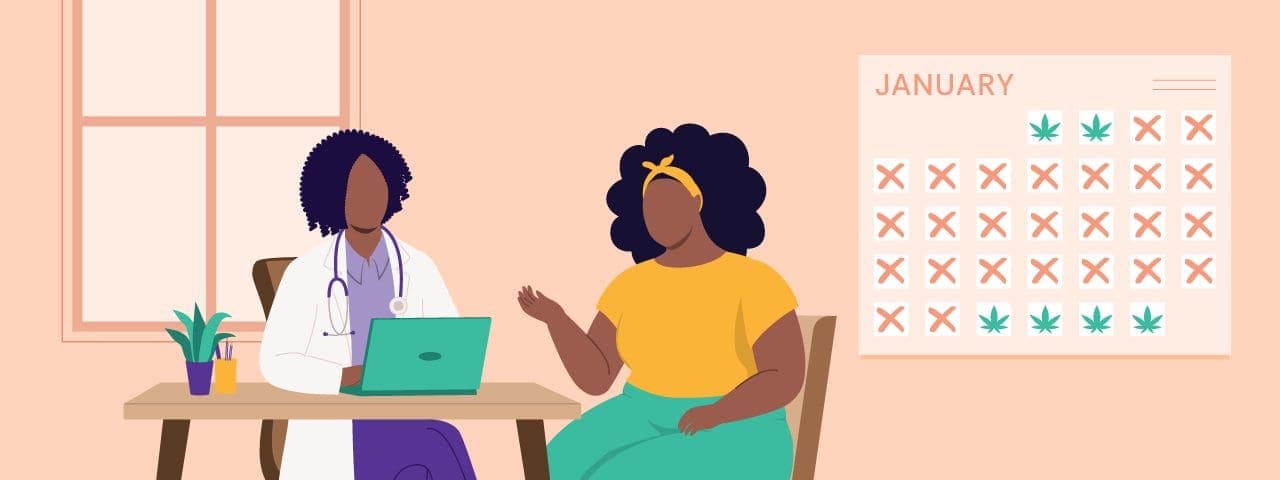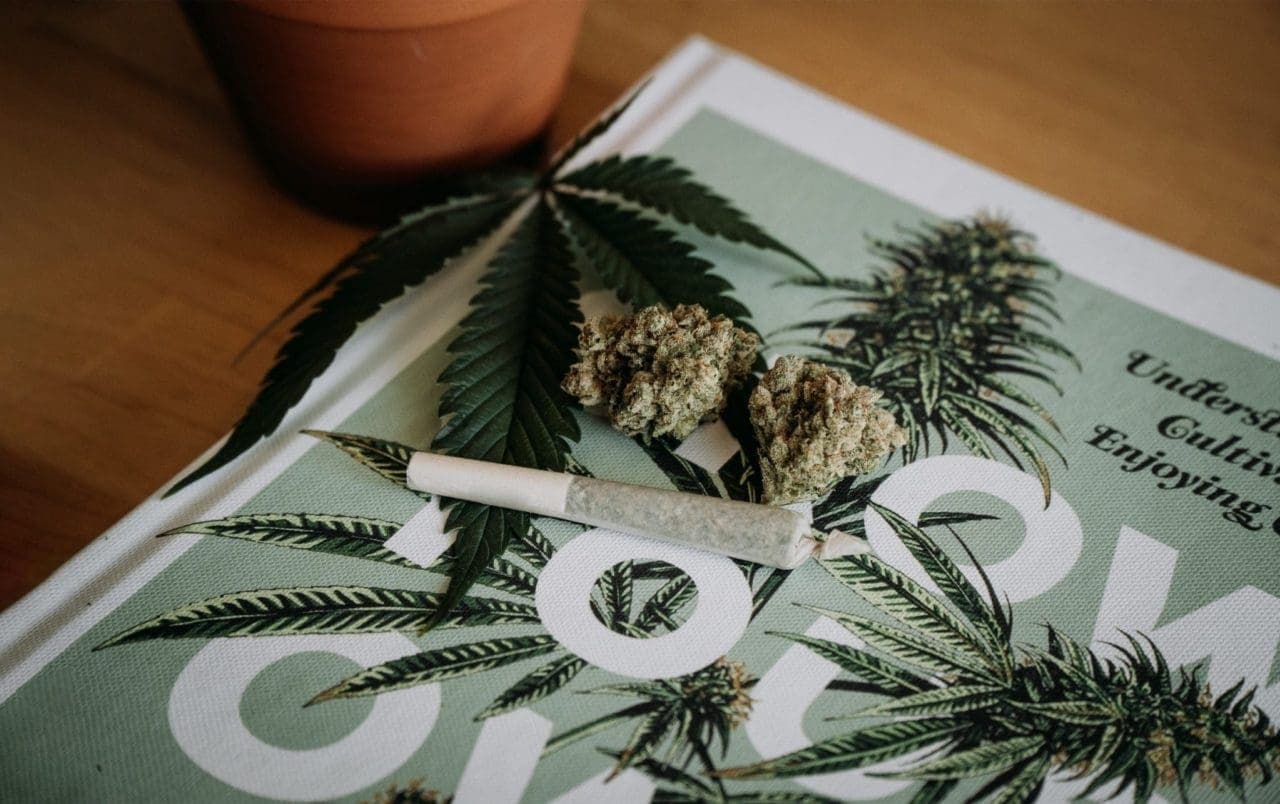What are tolerance breaks, and should you take one?

Article written by

April AcernoContent Writer
Content reviewed by

Deborah Garcia DNP FNP-BCMedical Reviewer
Tolerance occurs when your body becomes less responsive to the effects of a medicine or substance after repeated use.
As a result, you may need a higher dose to experience the same medical benefits.
With cannabis, a tolerance break or “T-break” is a temporary period during which you pause consumption to let your body reset its sensitivity to cannabinoids.
After a tolerance break, you may be able to achieve the same effects and therapeutic benefits with lower doses of cannabis, though limited research supports this. It’s also possible to reduce tolerance by gradually lowering your dose.
Get your medical marijuana card
How does weed tolerance develop?
Cannabis tolerance develops when your cannabinoid (CB) receptors become increasingly less sensitive after exposure to tetrahydrocannabinol (THC).
Repeated use of cannabis, especially high doses of THC, causes downregulation of CB receptors. This means these receptors decrease in number and don’t respond as well to THC or endocannabinoids, the cannabinoids your body naturally produces.
Over time, this causes your body to become dependent on external THC and leaves it unable to respond to endocannabinoids.
“Cannabis tolerance can begin to develop even at low doses, but this level of tolerance tends to remain stable over time,” says Jordan Tishler, MD, Leafwell physician and founder and president of the Association of Cannabinoid Specialists.
“However, at higher doses — typically 20 milligrams of THC or more — tolerance can escalate. This can eventually lead to dependence and cannabis use disorder, which should be avoided,” he adds.
How long it takes to develop a tolerance to cannabis varies based on factors like frequency of use and dosage.
What is a tolerance break, aka T-break?
A tolerance break, or T-break, is a period during which you stop using cannabis to reduce your tolerance.
After a tolerance break, it’s thought that you may be able to experience the therapeutic benefits of cannabis at a lower dosage than before your break.
How does a tolerance break work?
A tolerance break works by removing THC from your system and allowing your CB receptors to regain sensitivity and increase in number. This is called upregulation.
With an extended break from cannabis, it’s thought that your body’s CB receptors eventually return to their baseline levels.
T-break pros and cons
If you’re thinking about taking a tolerance break, it’s important to weigh the pros and cons.
If you use cannabis medically, a slow, controlled reduction in dose over many months may be a safer and more effective method to reduce tolerance. With a slow dose reduction, tolerance also tends to stabilize and no longer escalate in the future.
That said, if you’re planning to take a tolerance break, you may experience certain benefits:
- Achieving therapeutic benefits at lower doses: Resetting your cannabis tolerance level can help you feel the positive effects of cannabis when you resume use.
- Saving money: Tolerance breaks may help you purchase fewer cannabis products, which can save you money over time.
- Understanding your relationship with cannabis: A tolerance break offers a unique opportunity to reflect on why you use cannabis, what benefits it provides, and whether it carries any negative effects.
Potential drawbacks of a tolerance break include:
- Loss of symptom relief: If you use cannabis to treat a symptom or condition, taking a sudden tolerance break creates a gap in treatment. It may be better to work with your doctor to lower your tolerance slowly over time, using small dose decreases rather than a complete break from cannabis.
- Experiencing withdrawal symptoms: Some people experience cannabis withdrawal symptoms during a tolerance break. These can include difficulty sleeping, irritability, or low appetite.
A note on cannabis use disorderDeveloping tolerance is often the first step toward cannabis dependence. If you’re experiencing cravings or emotional distress, or cannabis is causing problems at work, school, or home, consider reaching out for support. Help is available: Speak with a Leafwell clinician about safe and mindful use, or for more immediate help, call SAMHSA’s free, confidential, 24/7 Helpline at 1-800-662-HELP (4357). |
How long should a tolerance break be?
“Clinical experience suggests that tolerance breaks of 2 to 4 weeks seem to be more effective than shorter breaks,” says Dr. Tishler.
Still, more studies in large, diverse populations are needed to understand the ideal length of a tolerance break.
What to expect during a T-break
During a tolerance break, some people may not notice any significant changes, while others experience withdrawal symptoms, such as:
- Sleep difficulties
- Irritability
- Anxiety
- Depressed mood
- Low appetite
How frequently you used cannabis before the break, as well as your dosage, can affect how you feel during a tolerance break.
How to lower weed tolerance without quitting
Some people try to lower their cannabis tolerance without taking a full break by consuming smaller doses or using cannabis products less often.
Others try changing product types, like switching from smoking to edibles.
If you use medical cannabis to help you manage a health condition, your doctor will likely recommend a gradual, controlled reduction in your dose, rather than a complete break in treatment. Lowering your cannabis tolerance without quitting entirely is likely safer and more effective than full tolerance breaks.
The bottom line: A tolerance break is a temporary pause in cannabis use
More research is needed to understand cannabis tolerance breaks and whether they are effective for lowering tolerance levels in the long term.
If you use cannabis for medical reasons, a tolerance break may not be a good idea. Your healthcare team can help you lower your tolerance by slowly reducing your cannabis dose over time, which also allows you to continue treatment.
Always talk with your doctor or a Leafwell provider before taking a tolerance break or changing your dosage. They can help you develop a plan to lower your tolerance and achieve a safe and effective dose for your health needs.
Get your medical marijuana card
Frequently asked questions
Learn more about cannabis T-breaks from answers to common questions.


